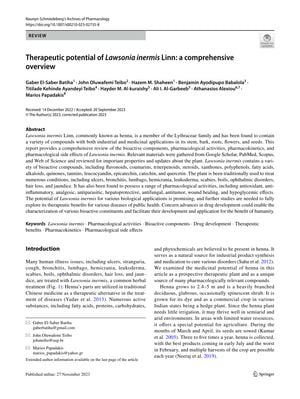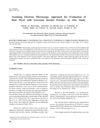Therapeutic Potential of Lawsonia Inermis Linn: A Comprehensive Overview
November 2023
in “
Naunyn-Schmiedeberg's archives of pharmacology
”

TLDR Henna has potential health benefits and can treat various conditions, but more research is needed to confirm safety and effectiveness.
The document reviews the therapeutic potential of Lawsonia inermis Linn (henna), detailing its chemical constituents and pharmacological activities. It contains compounds like flavonoids, coumarins, and quercetin, which contribute to its traditional use in treating various conditions, including hair loss. Pharmacologically, it exhibits antioxidant, anti-inflammatory, analgesic, antiparasitic, hepatoprotective, antifungal, antitumor, wound healing, and hypoglycemic effects. Studies have shown its effectiveness in wound healing, antimicrobial activity, and blood sugar reduction. For instance, a study with 20 Wistar female rats demonstrated improved wound healing, and another with 50 patients showed its efficacy in treating second-degree burns. Ethanol extracts of henna reduced blood sugar levels in diabetic rats and mice, and the plant was found safe in mice up to 2 g/kg body weight. However, potential toxicity and teratogenic effects at certain doses were noted. The document calls for further research to fully explore Lawsonia inermis's benefits and its potential in drug development, suggesting new formulations and clinical trials to evaluate safety and efficacy in human illnesses.
